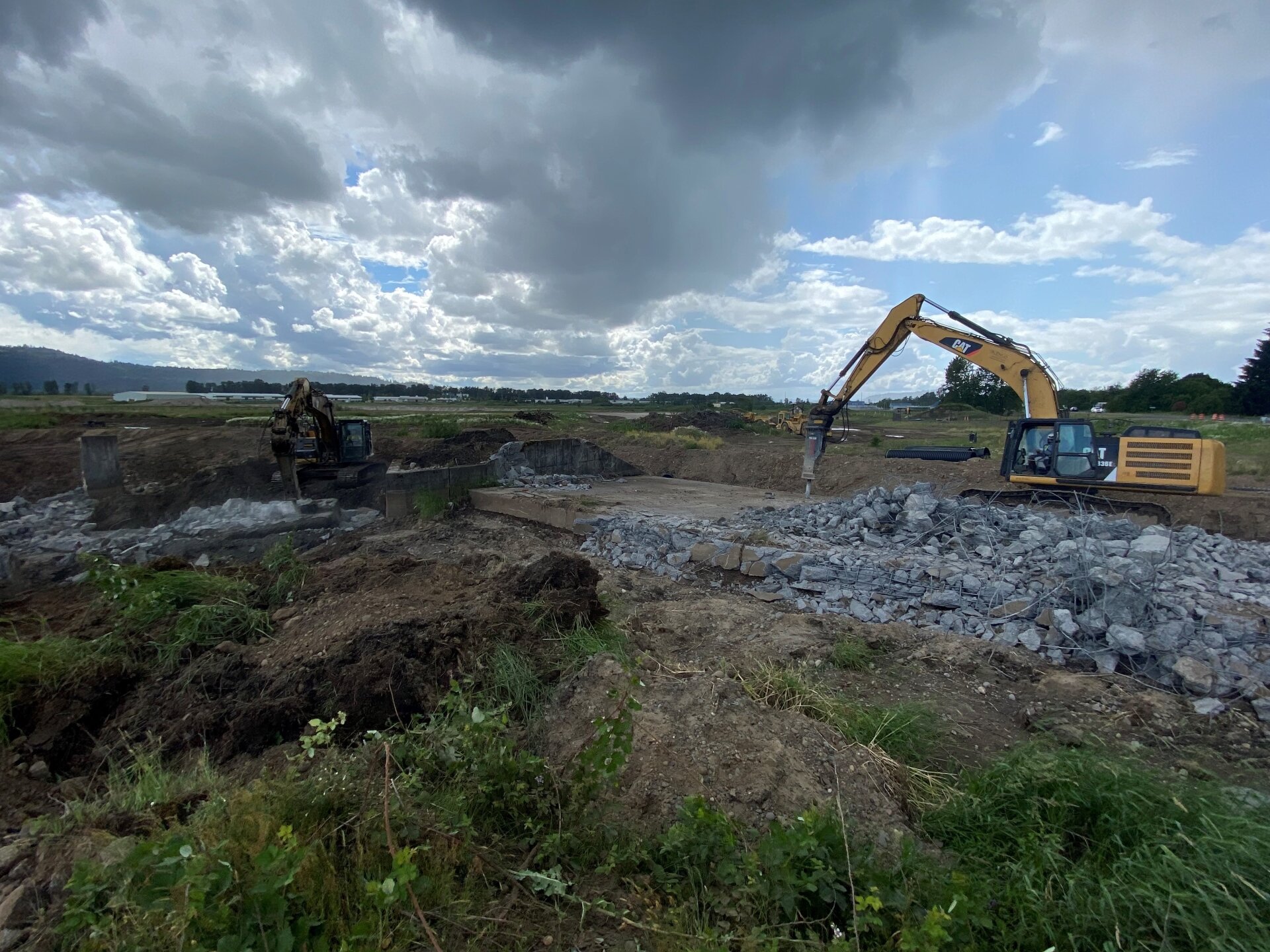
An Excavator with a Hydraulic Hammer attachment breaks apart concrete on the Gibbons Creek diversion structure at Steigerwald Lake NWR.
Construction at the Steigerwald Reconnection Project has ramped up to full capacity, and the team recently surpassed a big milestone! For those who drove by the site last week on State Route 14, you likely noticed large excavators fitted with hydraulic hammers demolishing a massive concrete structure on Gibbons Creek. That was a water diversion structure. Built in 1992, the structure disconnected Gibbons Creek from its floodplain and required routine maintenance dredging to keep it operational. With its removal, we can reconnect Gibbons Creek to its historic alluvial fan and floodplain, thus providing passage through the Refuge and out to the Columbia for juvenile salmon, lamprey, and other species.
Any time we do in-water work, we first gather fish from the area and move them to a safer location upstream. Before demolition work on the diversion structure, crews from Stillwater Sciences, USFWS, and the Lower Columbia Estuary Partnership removed all fish (including over 6,300 juvenile lamprey and 150 native freshwater mussels!) from this section of Gibbons Creek. After the creek was clear of fish, the creek was temporarily rerouted through a culvert around the construction area. With the diversion structure removed and the work area dry, our aquatic habitat contractor—LKE, Inc. of Washougal—can reconstruct Gibbons Creek’s historic channel and install numerous wood habitat structures.

Crews from Stillwater Sciences, USFWS, and the Lower Columbia Estuary Partnership work to conduct a “Fish Salvage” near the Gibbons Creek water diversion structure. Fish are moved to a safe place upstream so that work can be done around the structure.
Another exciting milestone occurred in May, when the prime contractor, Rotschy, Inc., began removing 2.2 miles of the existing levee. The team is reusing that material to construct the two new setback levees, which are well on their way to completion. Rotschy is also constructing new floodplain channels and wetlands, and just began excavating the foundation for the first of two new pedestrian bridges for the revamped trail system.

An excavator loads a bucketfull of dirt from the levee into a dump truck. This material will be used in the construction of setback levees.
Construction is on schedule to wrap up in November, at which time the Estuary Partnership will begin planting the final 170 acres of riparian areas that we plan to reforest. The refuge is slated to reopen to the public in spring 2022.